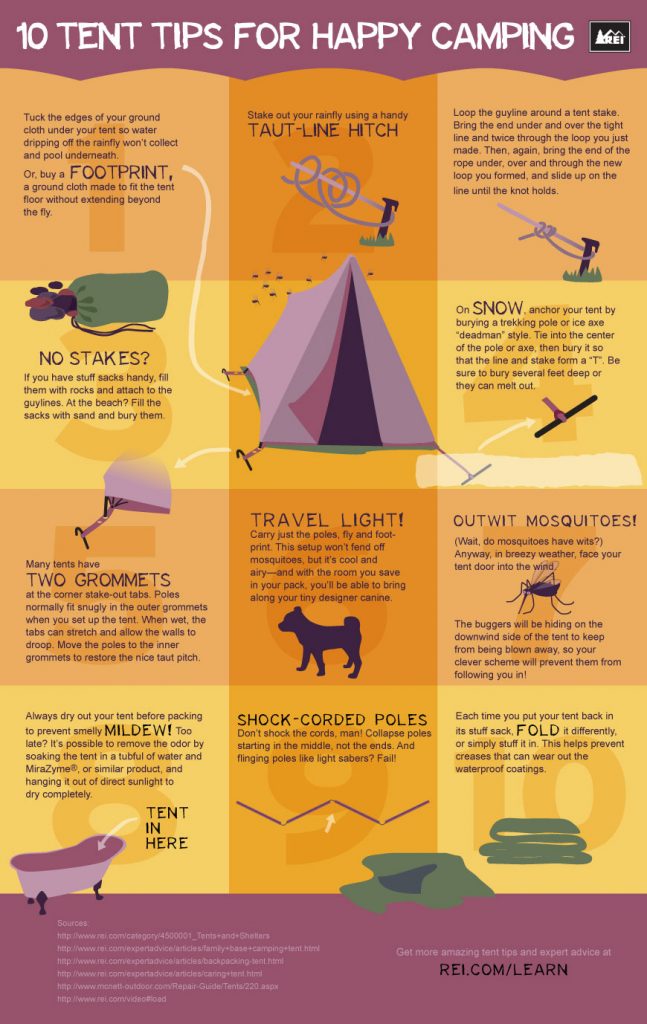Winter outdoor camping is a fun and daring experience, but it calls for appropriate gear to guarantee you stay cozy. You'll need a close-fitting base layer to catch your body heat, in addition to an insulating coat and a water resistant covering.
You'll likewise require snow risks (or deadman anchors) buried in the snow. These can be tied using Bob's clever knot or a regular taut-line hitch.
Pitch Your Outdoor tents
Winter months outdoor camping can be an enjoyable and daring experience. Nevertheless, it is very important to have the appropriate gear and understand how to pitch your tent in snow. This will protect against cool injuries like frostbite and hypothermia. It is additionally vital to consume well and stay hydrated.
When setting up camp, ensure to pick a website that is protected from the wind and without avalanche danger. It is also an excellent concept to pack down the area around your tent, as this will certainly help in reducing sinking from temperature.
Prior to you set up your tent, dig pits with the same dimension as each of the support points (groundsheet rings and guy lines) in the facility of the camping tent. Fill these pits with sand, stones or perhaps things sacks full of snow to compact and secure the ground. You might likewise want to take into consideration a dead-man support, which includes tying tent lines to sticks of timber that are hidden in the snow.
Pack Down the Location Around Your Outdoor tents
Although not a requirement in most locations, snow stakes (also called deadman supports) are an outstanding addition to your outdoor tents pitching set when outdoor camping in deep or pressed snow. They are essentially sticks that are designed to be hidden in the snow, where they will certainly freeze and develop a solid anchor factor. For finest results, make use of a clover hitch knot on the top of the stick and hide it in a couple of inches of snow or sand.
Set Up Your Outdoor tents
If you're camping in snow, it is a great idea to make use of guy lines a tent made for winter months backpacking. 3-season camping tents work great if you are making camp below timber line and not anticipating especially rough climate, but 4-season outdoors tents have sturdier posts and materials and offer even more protection from wind and hefty snowfall.
Be sure to bring appropriate insulation for your sleeping bag and a cozy, dry inflatable floor covering to sleep on. Inflatable floor coverings are much warmer than foam and help protect against cold places in your tent. You can likewise add an additional floor covering for resting or cooking.
It's additionally a great concept to set up your outdoor tents close to a natural wind block, such as a team of trees. This will make your camp extra comfortable. If you can't locate a windbreak, you can create your very own by excavating holes and hiding things, such as rocks, camping tent risks, or "dead man" anchors (old camping tent individual lines) with a shovel.
Tie Down Your Camping tent
Snow risks aren't necessary if you utilize the appropriate methods to secure your outdoor tents. Buried sticks (perhaps accumulated on your method walking) and ski posts work well, as does some version of a "deadman" hidden in the snow. (The concept is to create a support that is so solid you won't be able to draw it up, despite having a lot of effort.) Some makers make specialized dead-man supports, but I like the simpleness of a taut-line hitch connected to a stick and after that hidden in the snow.
Be aware of the terrain around your camp, particularly if there is avalanche threat. A branch that falls on your tent could damage it or, at worst, harm you. Additionally be wary of pitching your tent on an incline, which can catch wind and bring about collapse. A sheltered area with a low ridge or hillside is far better than a high gully.
